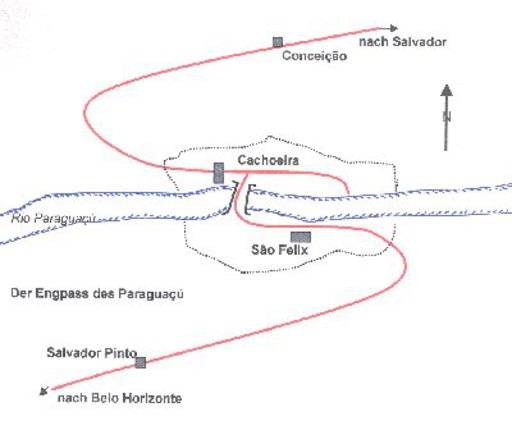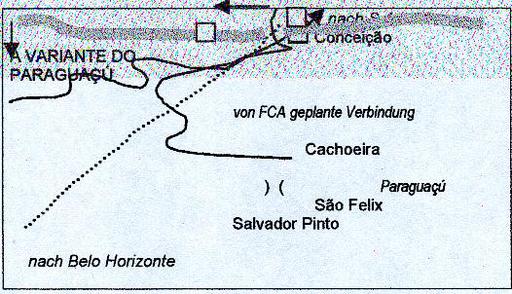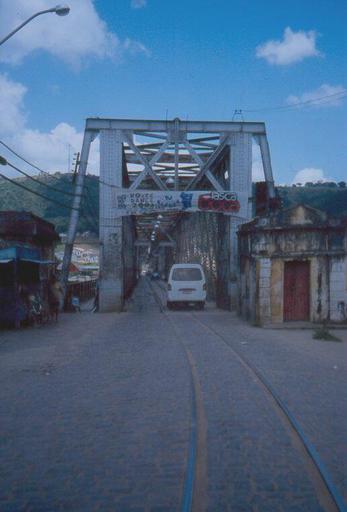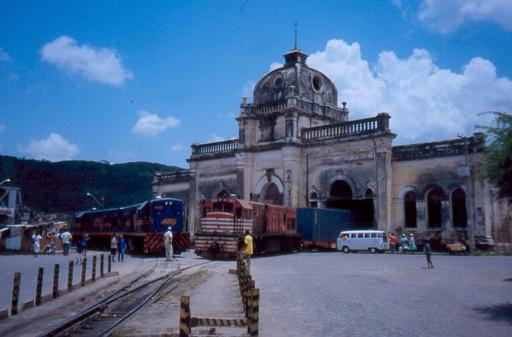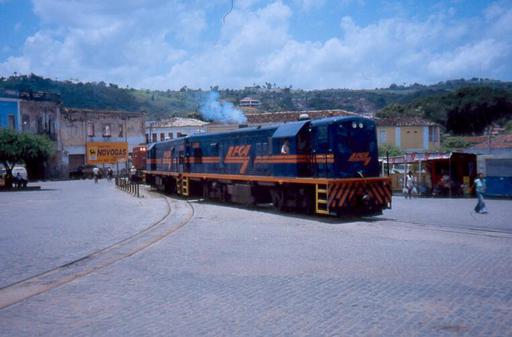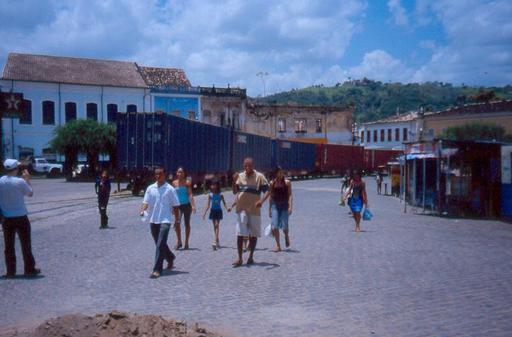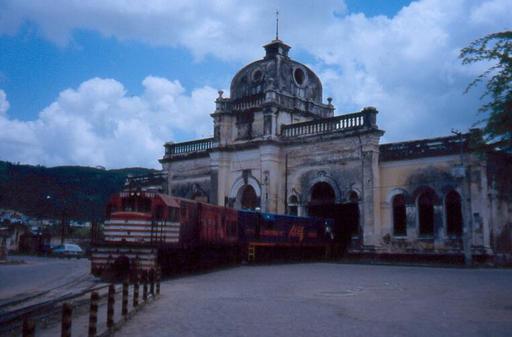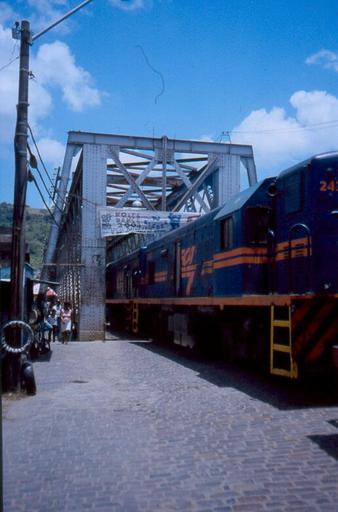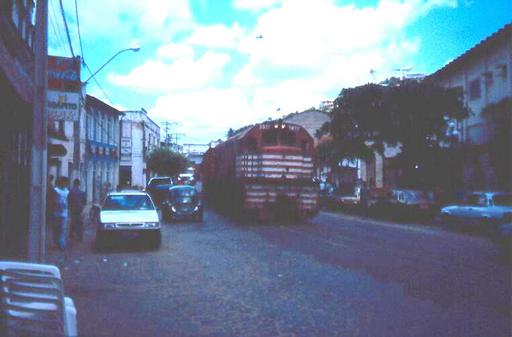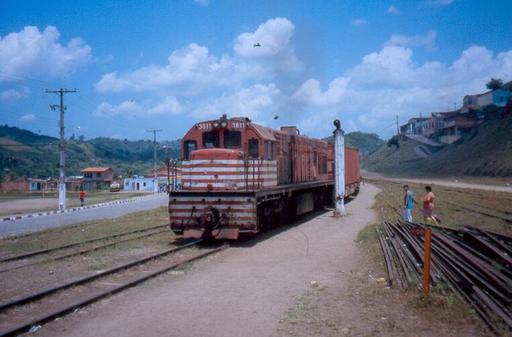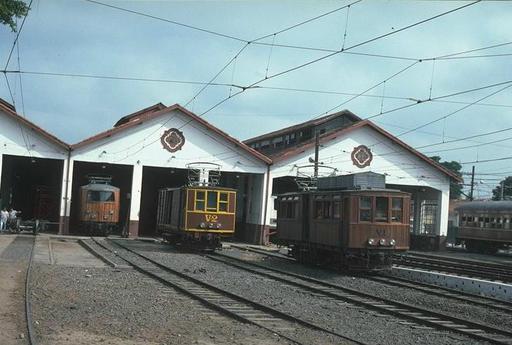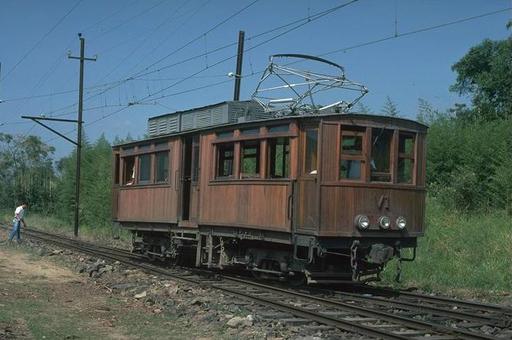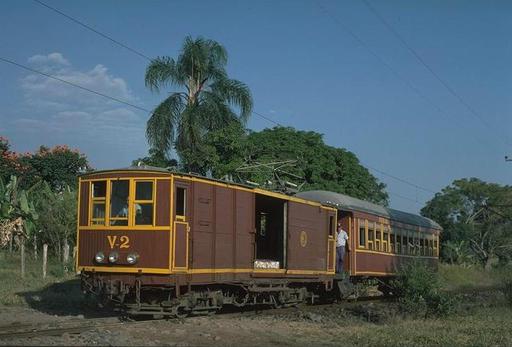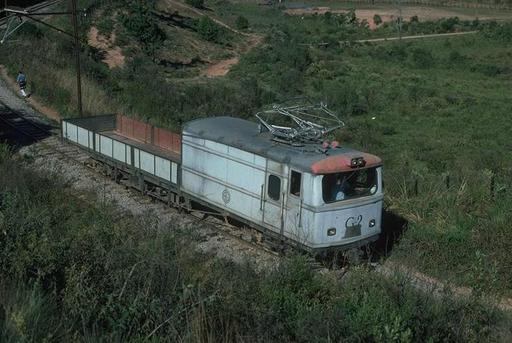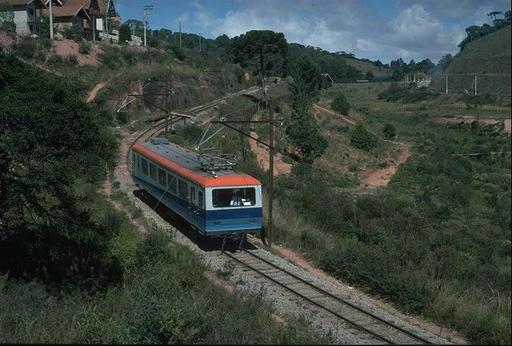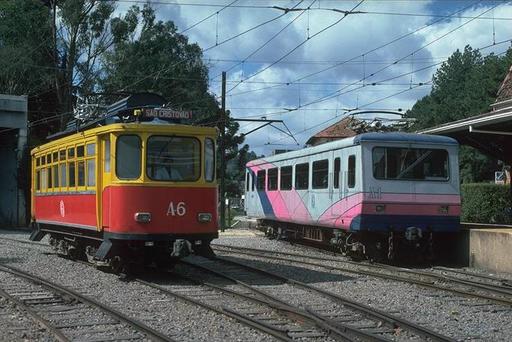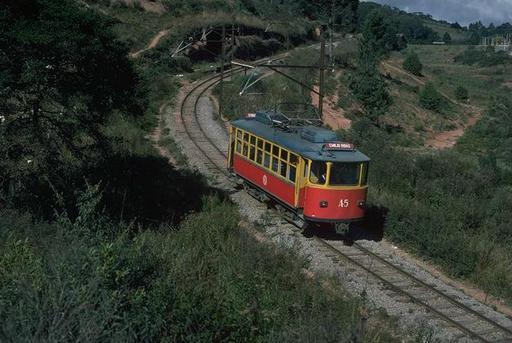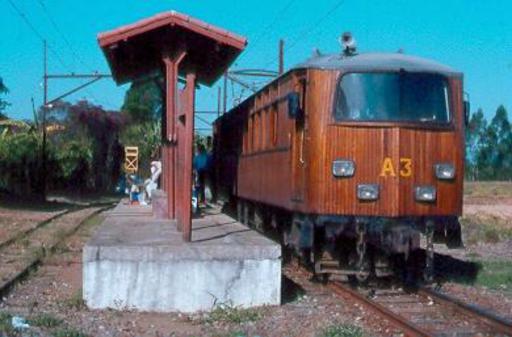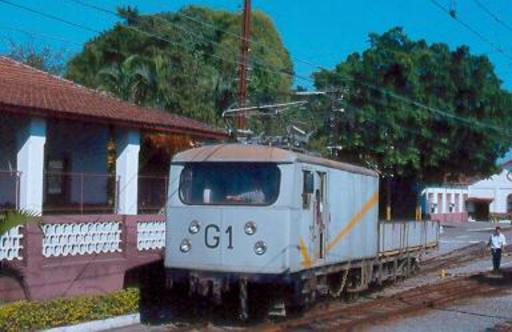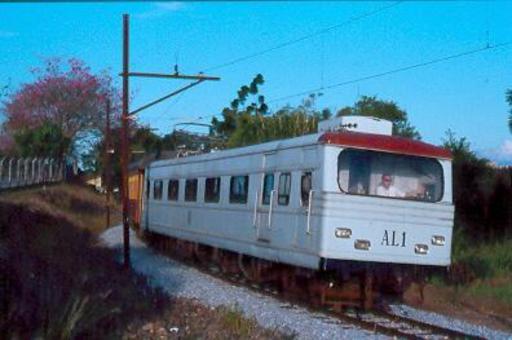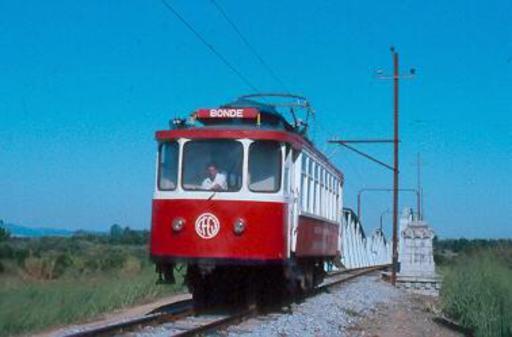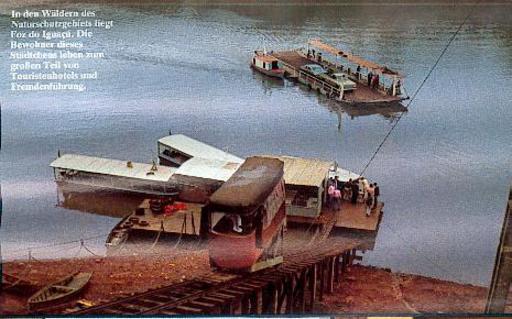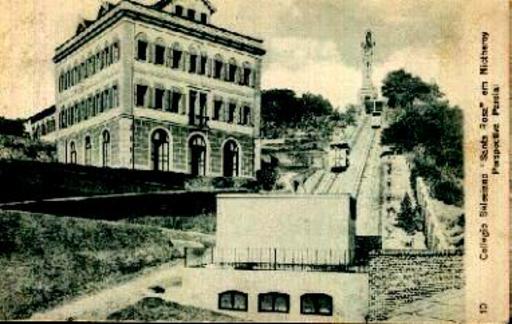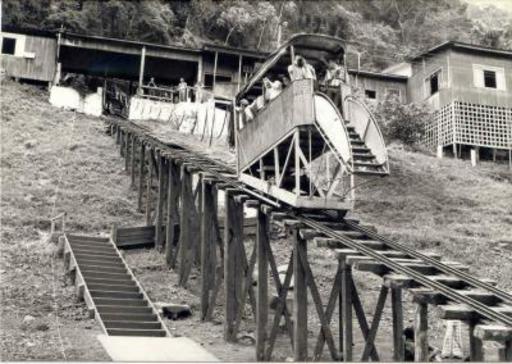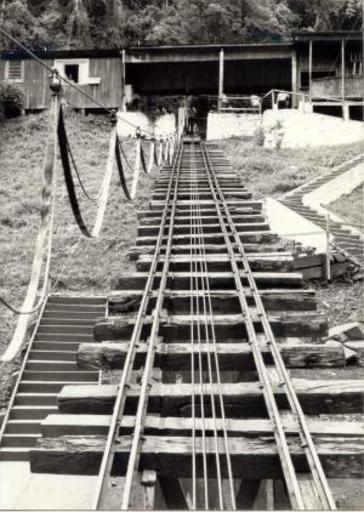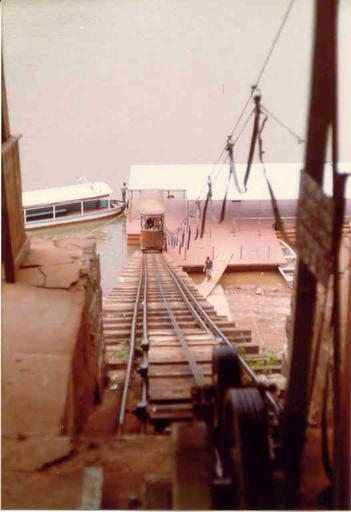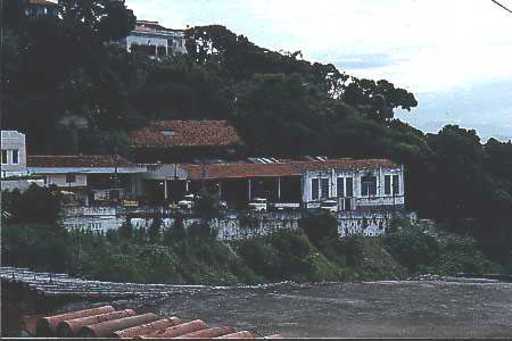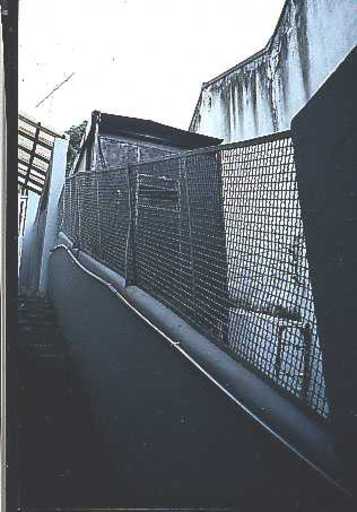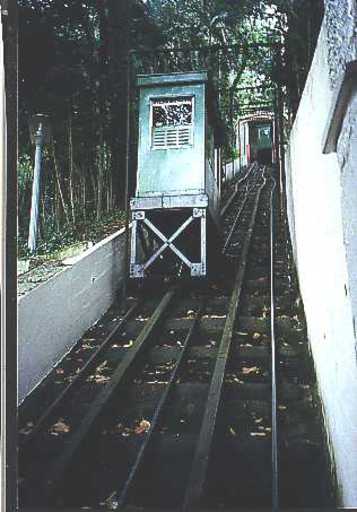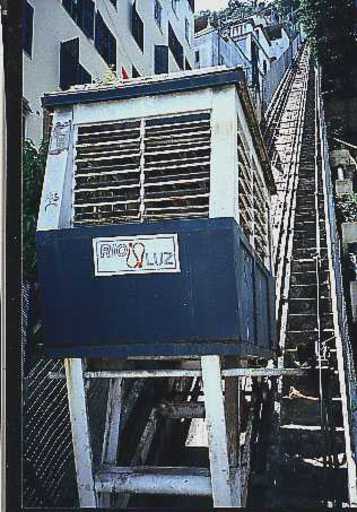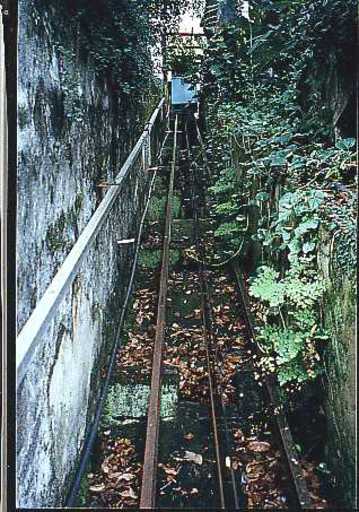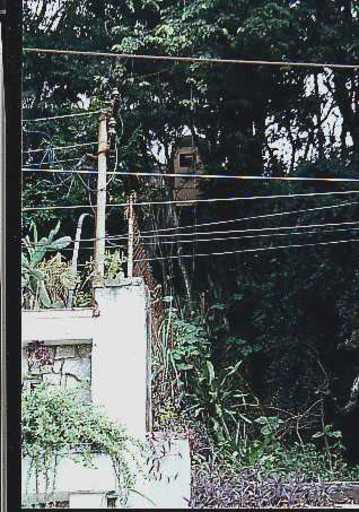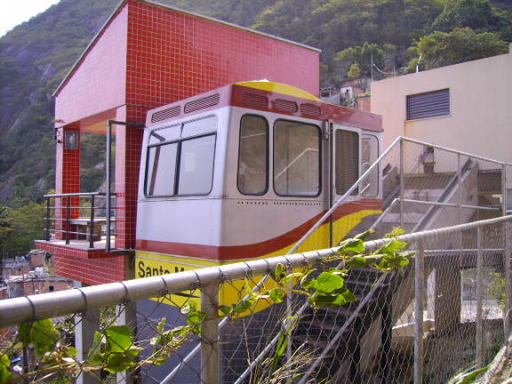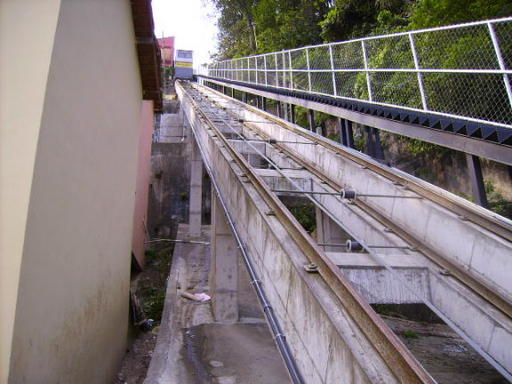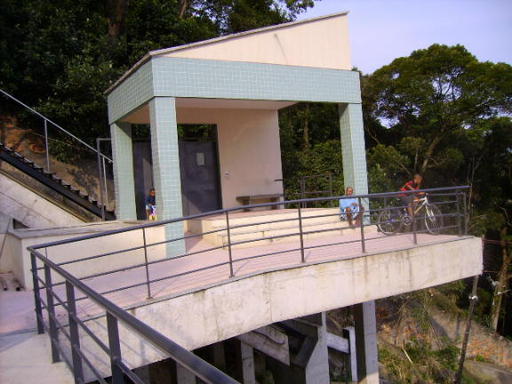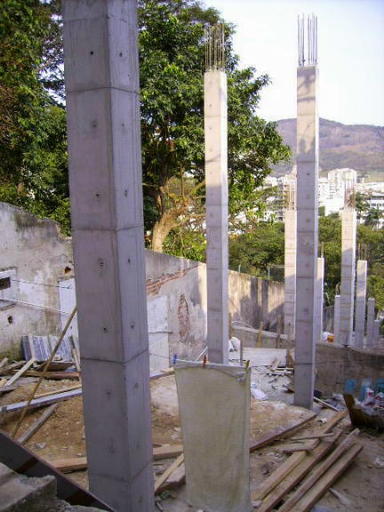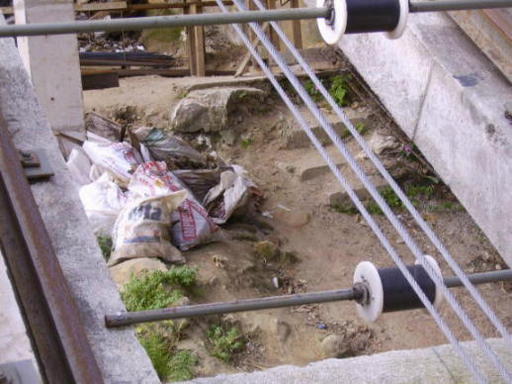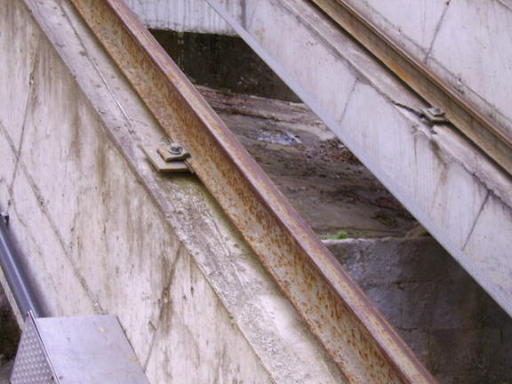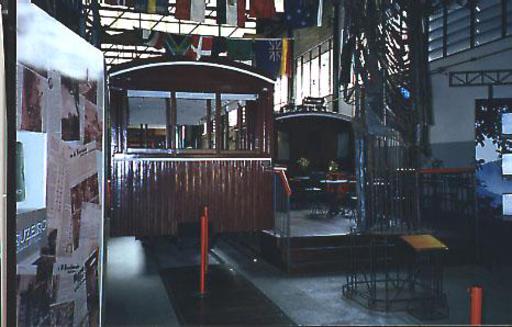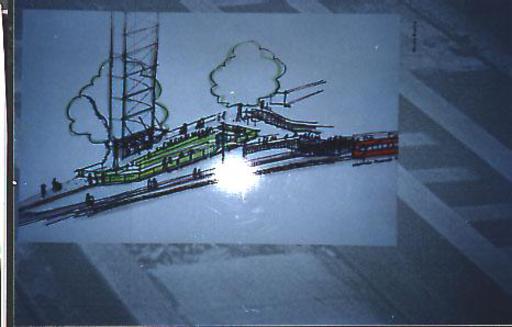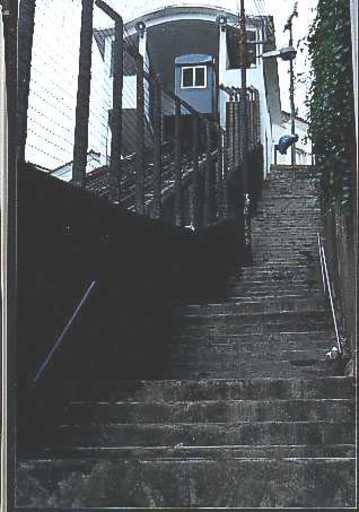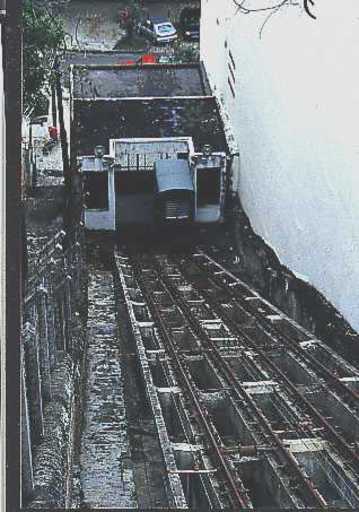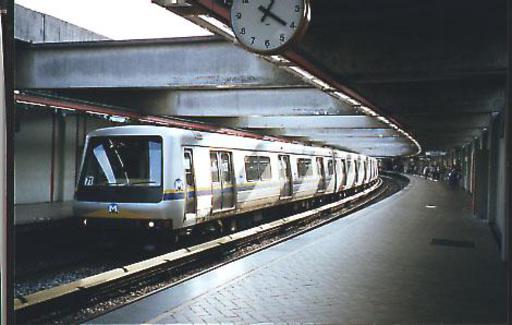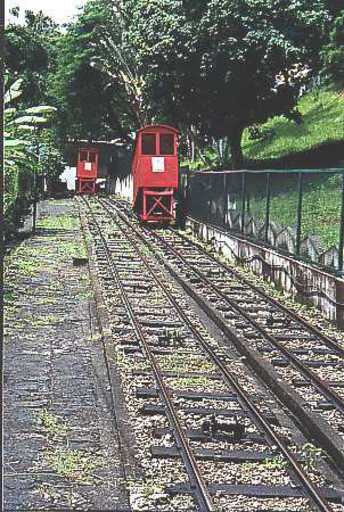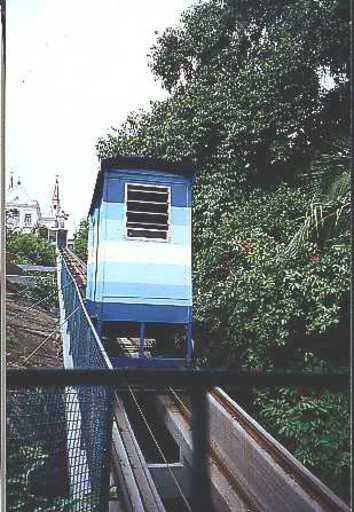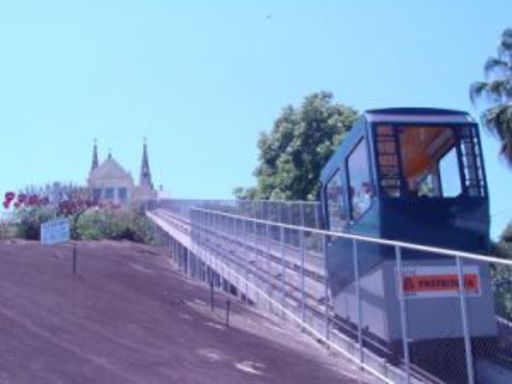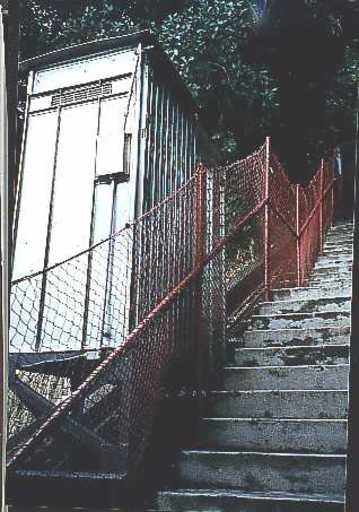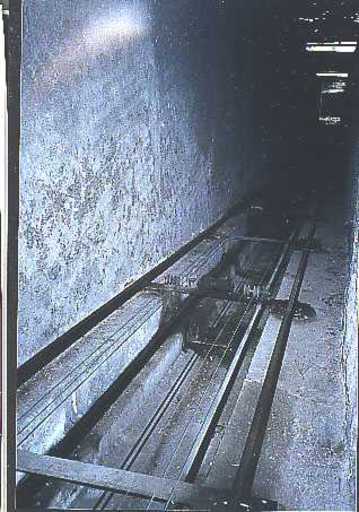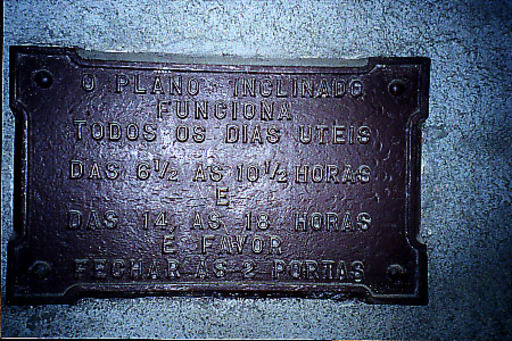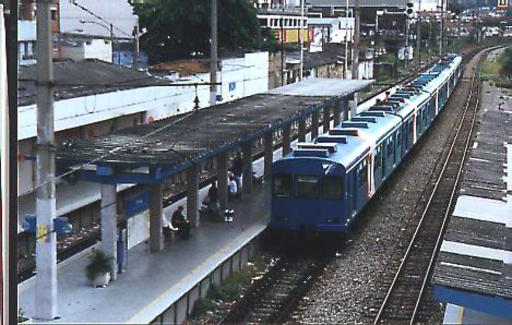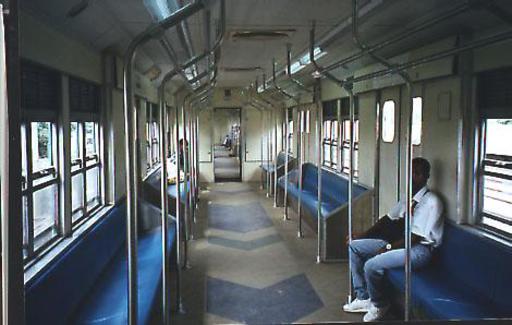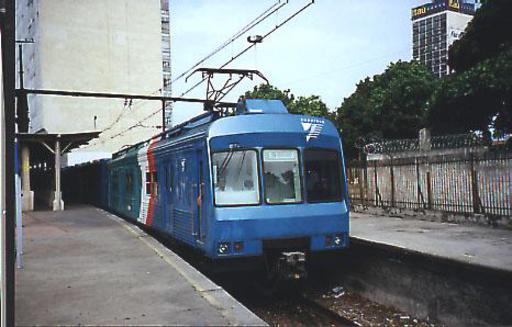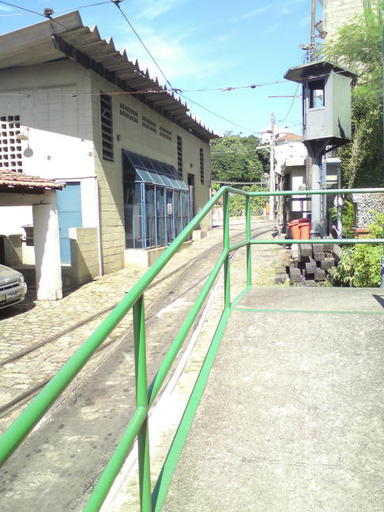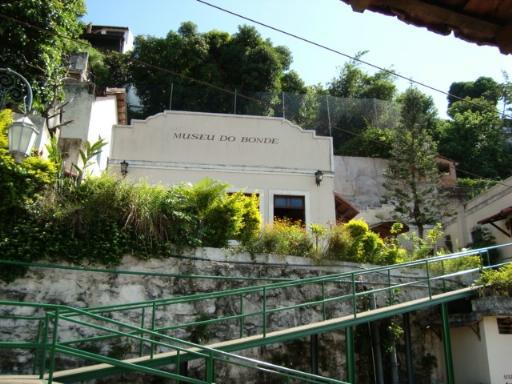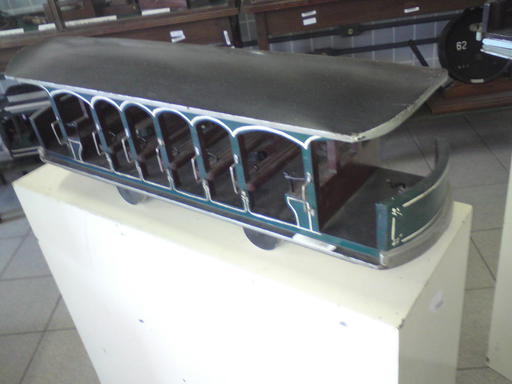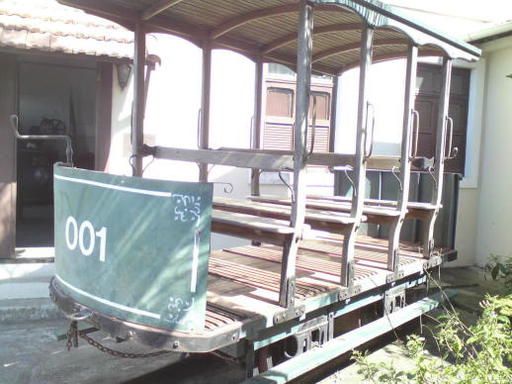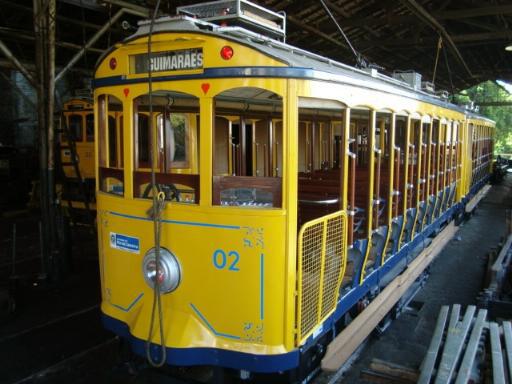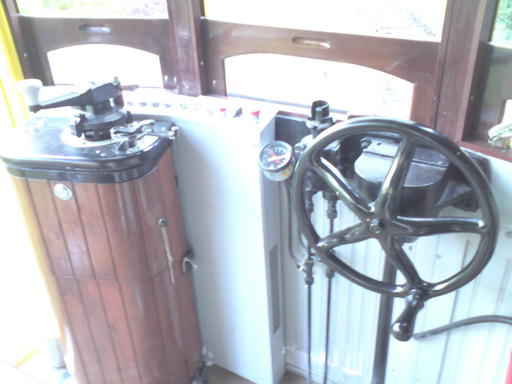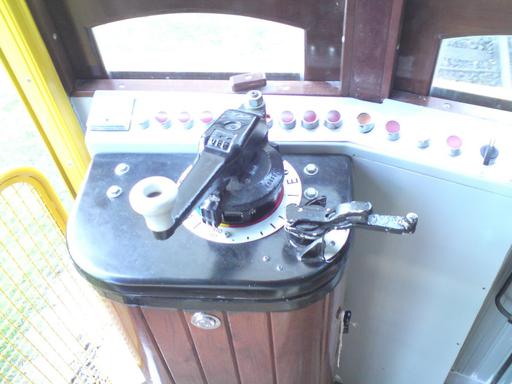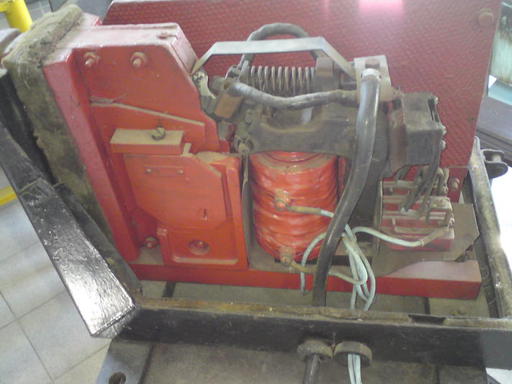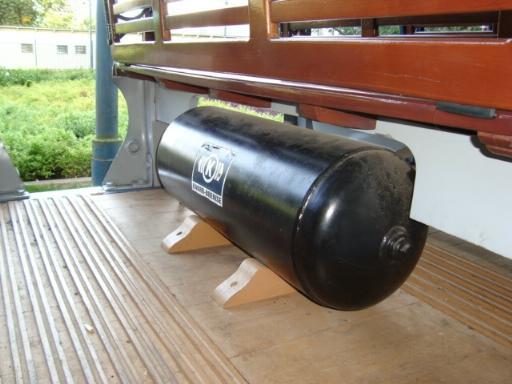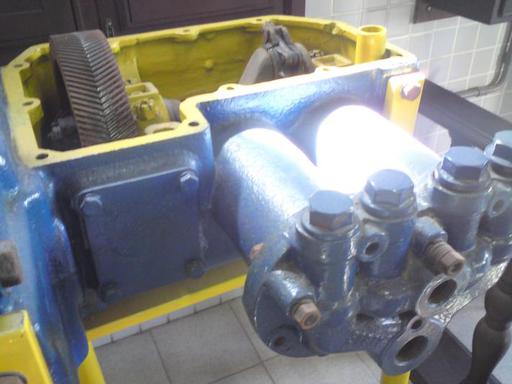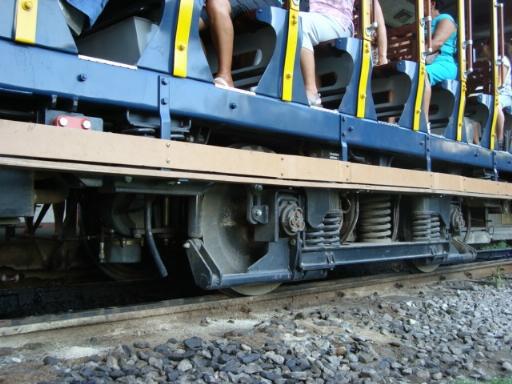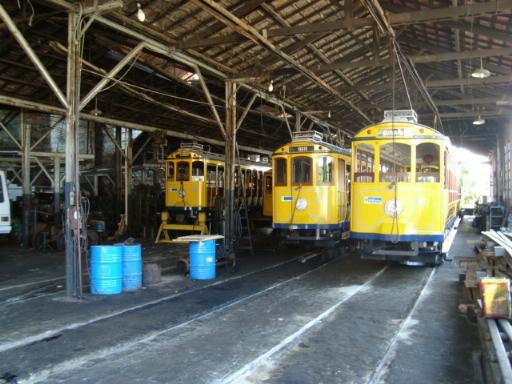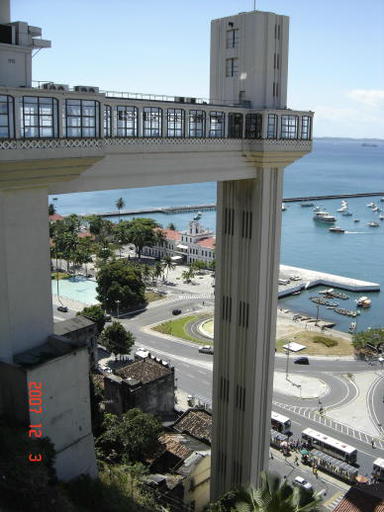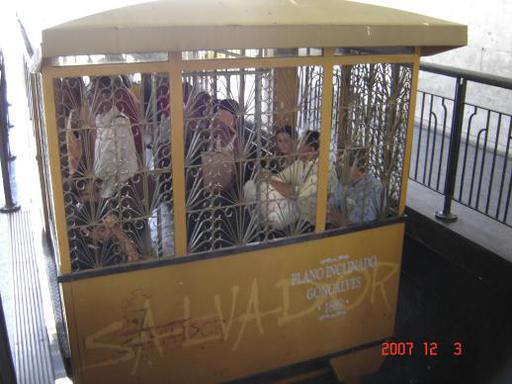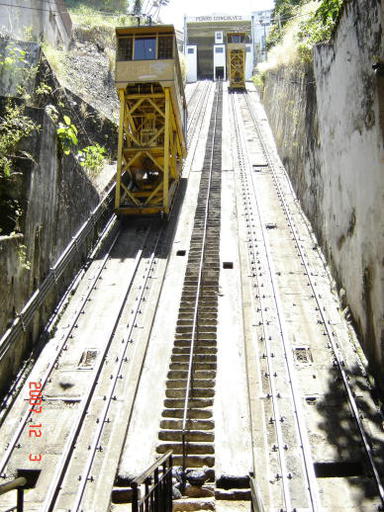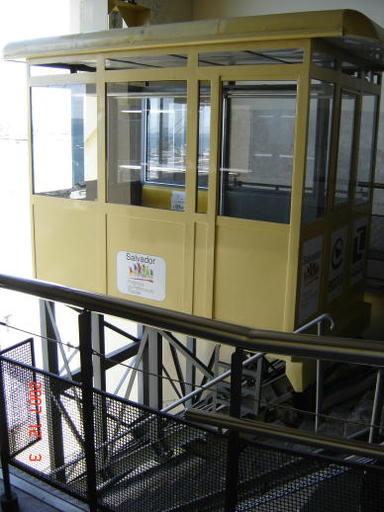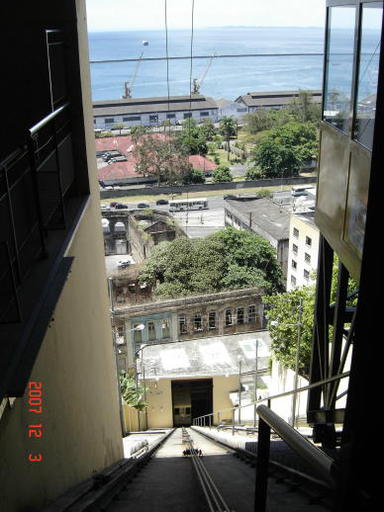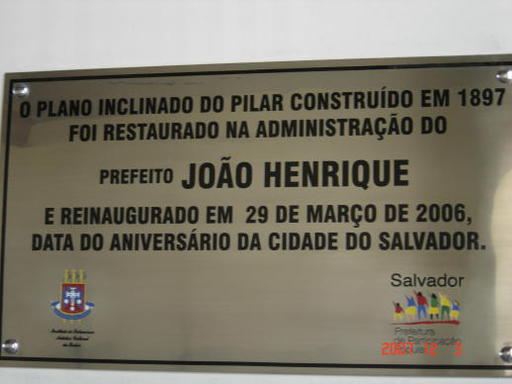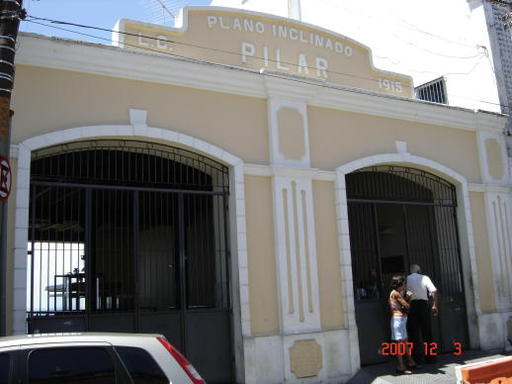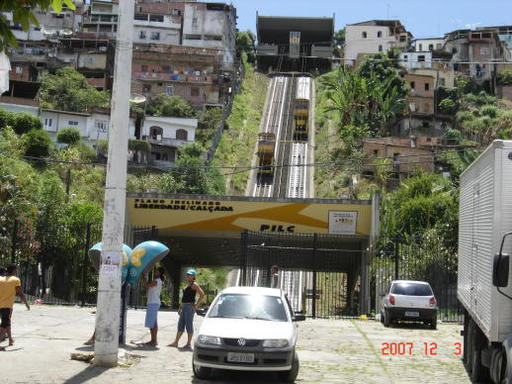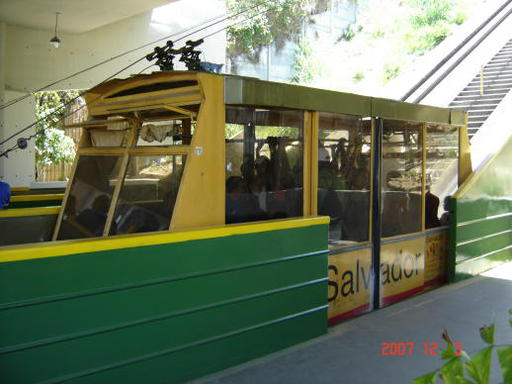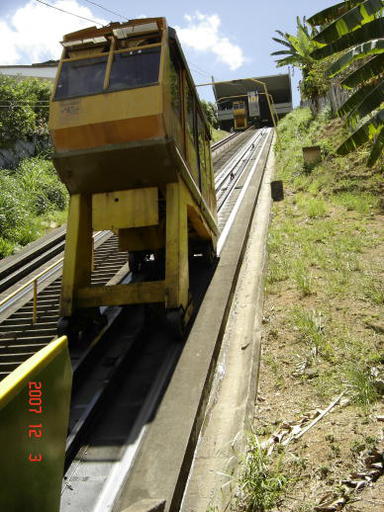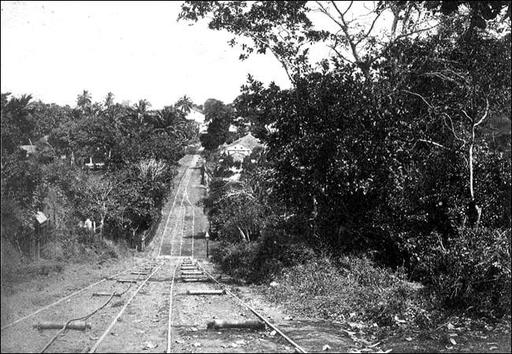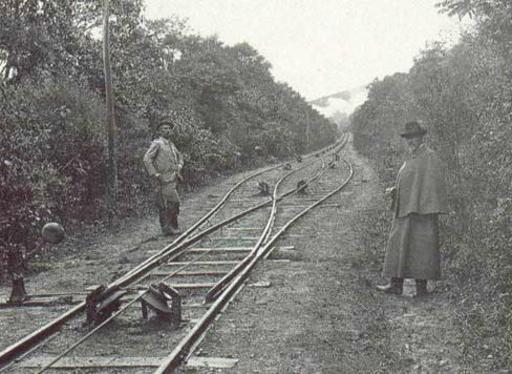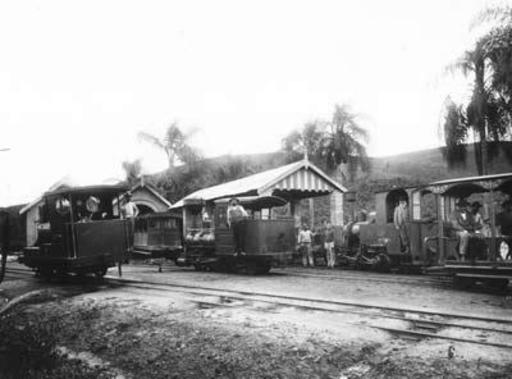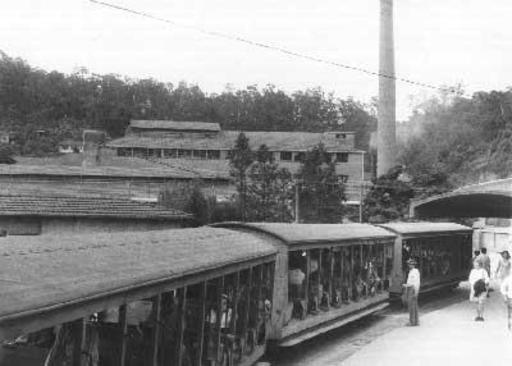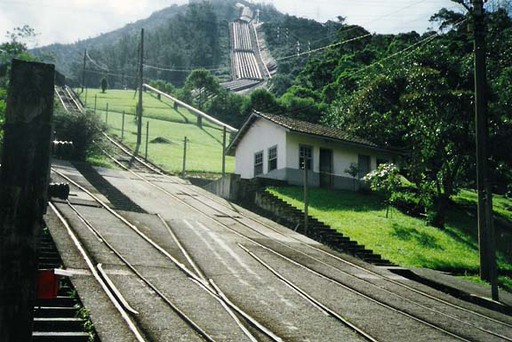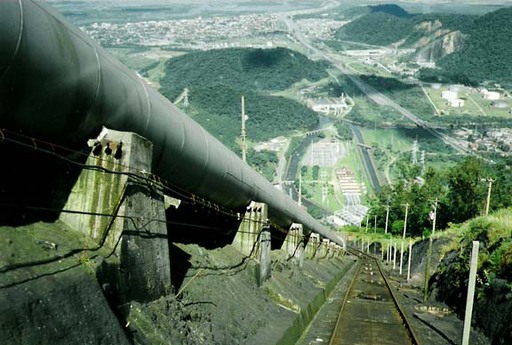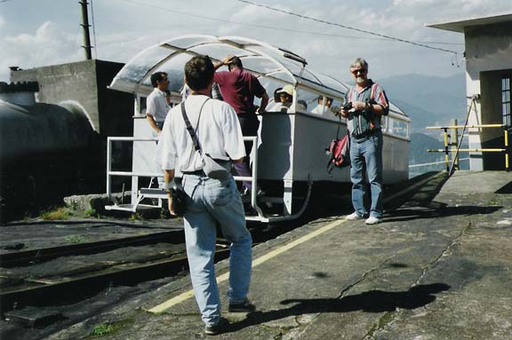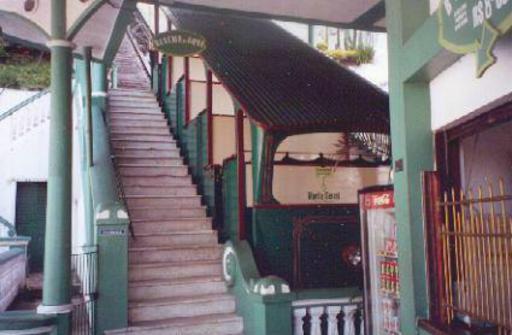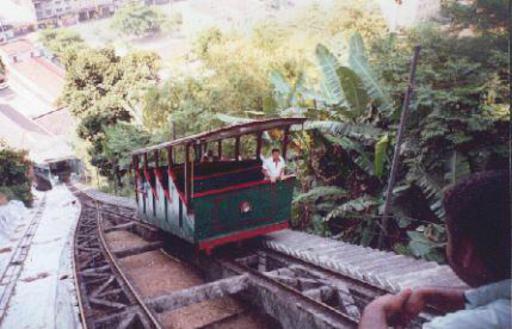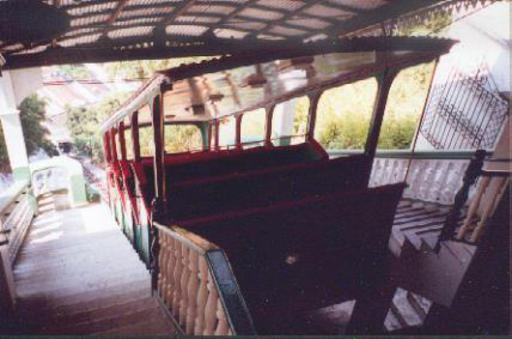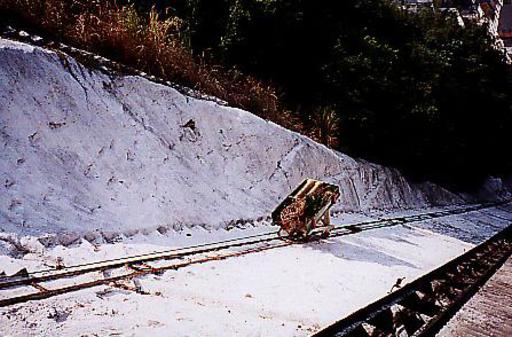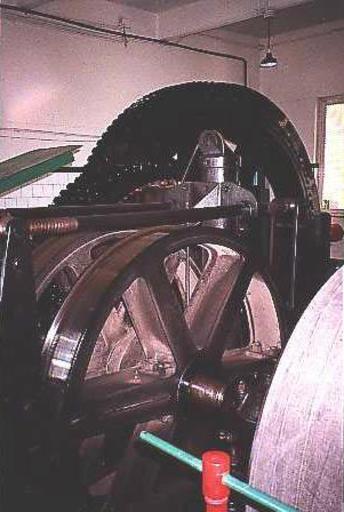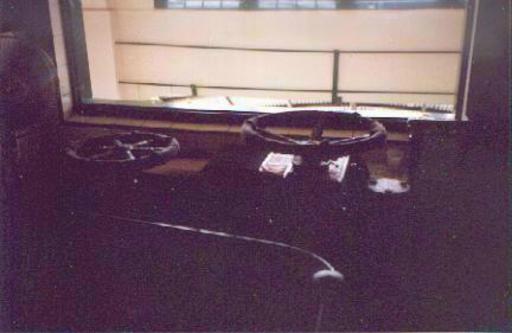Brasilien
Cachoeira and São Felix
A bottleneck is about to disappear! The (ill-)famous bottleneck between the communities of São Felix and Cachoeira in the state of Bahia will be disappearing soon. Originally, the federal railway RFFSA planned to build the "Variante do Paraguaçú", a 120 km long bypass from Taperi in the southwest to Santo Amaro in the northeast of Cachoeira, to circumvent the bottleneck and the steep inclines in and out of the Paraguaçú valley. But only 2.5 km track was laid from Taperi and on a further 10 km the track ground was prepared, and then the money was finished. Now the FCA (Ferrovia Centro Atlântico) (it belongs to the CVRD, Companhia do Vale do Rio Doce) has prepared a replacement project which envisages a short line but with many bridges. The connexion will start near Engenheiro E. Machedo and end near Conceição north of Cachoeira and shorten the former 22 km section to approximately 17 km. Thereby, the Paraguaçú valley would be crossed by 20 m high bridge, and this would also make the Paraguaçú river passable for ships west of the present railway bridge. The state of Bahia, the two communities concerned and the FCA receive generous financial support from ANTT, Agência Nacional de Transportes Terrestres. Detailed planning should have been finished by the end of 2003, and the line is due to open by 2007 at the latest (FLB was able to visit the old bottleneck). According to a statement by the director of FCA, Elias Nigri, FCA nees this bypass as soon as possible, because at present it transports on the only railway line connecting the northeast of Brasil with the remainder of the country less than 20% of the goods on offer which however means for the communities concerned up to six trains per day, and thus blocking both of the local streets and the bridge during approximately twelve hours per day.
Gargalo do Paraguaçú at Cachoeira und São Felix: New Projects
The steel supporter bridge (Ponte Dom Pedro II) is almost 100 years old and replaced a train ferry which transferred during the first years the goods wagons. Later the bridge received an asphalt cover so that it could also be used by cars. During RFFSA times about two to four trains were the rule, and until 1979 there were also passenger trains Salvador - Monte Azul three times a week. The very tight curves and the lack of real railway station layouts (at Cachoeira two tracks inside the station hall!) on both sides of the river forces the railway to split long trains and to distribute them on several urban streets (many streets on both sides of the river are equipped with tracks). Then, the wagons must be pushed "portionwise" (always according to length of wagons and weight, two to four wagons each time) onto the bridge and be pulled down on the other side. All this happens in the midst of road traffic of the two communities, at the same time as this comes to a complete standstill for bridge crossings during this operation. In the meantime, the number of daily trains has risen to six, and for each train both communities are blocked for at least two hours. In addition, the railway has to provide shunter locomotives for this. As the bridge cannot receive full loads any more, the wagons can only be loaded partially which requires additional trips. FCA has thus arrived at the limit of usability. Even if the scenery for the observer (if he is a railfan) certainly is of interest, it can be understood that the communities concerned will be very happy for a replacement solution, specially as both communities send or receive very few goods by rail.
According to press reports from March 2003, it is earnstly planned to solve the problem.
Estrada de Ferro Campos do Jordão
Since 1874, when the first lung clinic opened in Campos do Jordão, sick patents were transported on horseback up to the healthy mountain climate. This transport was very uncomfortable. At the beginning of the 20th century for the first time the idea of building a mountain railway came up which should allow a more comfortable and quicker voyage. The medical doctor Emílio Marcondes Ribas, supported by Dr. Victor Godinho, an influential politician, proposed the construction of a railway line which should connect the city of Pindamonhangaba in the Paraíba valley, 132 km from São Paulo and 250 km from Rio de Janeiro, via the Serra da Mantiqueira with the high altitude platform. Construction of the line started in 1912; the line opened in 1914, and one of the steam trains then usual took 12 hours for the line of 47 km. For the crossing of the the river Paraíba do Sul passengers had to use a ferry.
From 1917 onwards a motor coach with a Mercedes petrol engine of 22 HP (it has been restored and will go to a museum) was used which was transported on board of the ferry, and in 1924 the line was electrified by The English Electric Company at 1500 Volt direct current, and a bridge was built to cross the river. The electrical equipment of the vehicles, including the beautifully restored control equipment is still used today by the motor coaches of the mountain section, with, however, new bodywork. For the transport of cars and buses electric goods motor coaches called "Gôndolas" were used until the former modest dust road was modernised by 1977. For the transport of fruits from the Japanese community there were electric goods locomotives.
With the end of the treatment of lung diseases in 1970 the railway which originally was under the rule of the Transport Secretariat of the government of the state of São Paulo came under the rule of the Secretary for Sport and Tourism and today serves for the transport of tourists, mainly from São Paulo. During the hot summers they escape the heat of the city, and in the winter they run on skis. Campos do Jordão is called Switzerland of Brasil, and many hotels and restaurants have names such as "Lausanne" and the like. In 1970 at Águas Claras, at the end of the valley section, the Parque Reinas was opened, at the station Santo António de Pinhal a panoramic view point and at Campos do Jordão the Parque Capivari with the first chair lift of Brasil.
The line consists of three distinctive parts: (1) the valley section from Pindamonhangaba on 551 meter above sea level up to the Parque Reinas das Águas Claras at Piracuama along the river of the same name, about 20 km, running time 40 minutes, (2) the consequent mountain section of 16 km with a gradient of up to 10,5 per cent (without rack - in Switzerland at gradients steeper than 7 per cent the use of rack is considered) and in particular on the left hand side a splendid wide view down to the valley, and reaching the highest point of the line 1743 meter above sea level at Cacique, and the consequent section of 3 km down into the valley, and (3) the tram line from São Cristovão in the district of Abernésia to the terminal station Emílio Ribas at Campos do Jordão with a length of 8 km, at 1700 meter above sea level, thus almost the height of St. Moritz in Switzerland. On the valley section mostly the passenger and goods motor coaches V-1 and V-2 with trailers from Guaruja are used, as well as the motor coaches A -3 and AL-1, on the complete line (including the mountain section) the motor coaches A-1, A-2 and A-4 which are equipped with electric brakes, magnetic track brakes and air brakes type Westinghouse, and which today only have one driving position, and on the tram section tram cars A-5 and A-6 built by MAN in Germany which earlier worked on the Guaruja tramway, near Santos, and were acquired together with a further tramcar A-7 in 1956. In addition can be found the Gôndola G-2 from 1928 which earlier - before the opening of the improved road in 1977 - transported cars, together with the still existing Gôndalas G-1 and G-3 and further Gôndolas.
At Pindamonhangaba - a name of indian origin - are the workshops and offices of the company. An important structure is the steel bridge across the river Paraíba do Sul with a length of 160 meter. It was constructed in France and was imported knocked down in 1924. The supports come from Portugal and were adapted by hand. Before that time trains were transferred by ferries. Today's bridge is of a more recent origin. The line owned until 1960 a stone quarry which was situated at Piracuama, 17 km from Pindamonhangaba, and which today houses the Parque Reino which is being visited by 2000 tourists per year. Also, the railway was responsible until 1970 for all the telephonic connexions of the area.
The rolling stock
Before the opening (1912):
2 steam engines
After the opening (1914) additionally:
2 steam engines, of which one for the mountain section
9 light motor coaches "Litorinas" for the valley section
1 petrol motor coach Bugatti, from 1917 on for the mountain section, with Mercedes-Benz motor 22 HP
The petrol motor coach Bugatti is at present being restored and receives a new Mercedes motor which is more expensive than originally the entire vehicle.
3 luggage coaches
1 goods wagon, closed
1 goods wagon open
1 open wagon
After electrification (1924):
2 motor coaches A-1 and A-2, 4 motors at 750 Volt, two each in series, total 240 HP, manufacturer: Birmingham Carriage & Wagon Company, and English Electric, today 40 seats.
2 goods motor coaches V-1 and V-2, as above (originally: B-1 and B-2)
From 1927 additionally:
1 motor coach A-3, as above
5 gôndolas G-1 to G-5, as above
Still around are G-1 and G-2, whereas the old G-2 has been renumbered G-1 and the old G-1 is under reconstruction.
From 1932 additionally:
1 motor coach A-4, built at the line's own workshops with English Electric bogies, otherwise as above
2 new goods motor coaches, V-3 and V-4 (ex works numbered 3V and 4V),
4 motors as above, but from MAN/Siemens Schuckert
These goods motor coaches were after the second World War rebuilt into car transporters (Gôndolas) and renumbered G-3 and G-4, whereby one driving position was removed and new, flatter transport platforms were built. One photograph of the rebuilt Gôndola G-4 can be found on page 83 of the book "História do Transporte Urbano no Brasil".
From Guaruja, 1956:
1 tram car A-5, ex Guaruja 5, of 1924, 4 axles, 2 motors 750 Volt, as built with maximum traction bogies
2 tram cars A-6 and A-7, ex Guaruja 9 and 7, of 1930, 4 axles, 2 motors 750 Volt, as built with normal bogies.
All tram cars have 36 upholstered seats with reversible back rests.
1 steeple cab locomotive T-1, of 1924, length over buffers 6,04 Meter; width 2,45 Meter; wheel base 2,8 Meter;
2 motors 750 Volt of 50kW each; single-chamber (unicameral) air brake; maximum speed 45 km/hour
2 passenger coaches 1st class, 38 seats
1 passenger coach 2nd class, 30 seats
2 mixed coaches 2nd class, 40 seats
All have air brakes, manufacturer MAN/Siemens Schuckert
Of these vehicles tram car A-5 was burned during the Carnival 1976. In the meantime, it has been rebuilt and has received normal bogies. Tram car A-7 has in the meantime received maximum traction bogies, possibly from A-5. The turnstile (roleta) at the center of the car, used for passenger counting, has been removed, and it operates on the valley section. Of the locomotive T-1 (originally used for shunting at Campos do Jordão) the motor is used as drive power of the chair lift to the Morro do Elefante; the stationary body itself serves for the sale of tickets to the lift.
As these trams have two separate motors, they can only operate at the EFCJ in series. Maximum traction bogies have large leading (driven) wheels in the operating direction, the others are small.
From 1972 additionally:
1 luxury motor coach AL-1 (ex TL-1) for the valley section, with English Electric equipment (as A-1 to A-4). This motor coach was probably built up on two bogies of demolished Gôndolas or reserve bogies.
All motor coaches and Gôndolas have in the meantime received new bodies from the EFCJ workshop. Gôndola G-3 (probably the old Gôndola from English Electric, of 1928) received temporarily a passenger coach body without change of number. A picture of this can be found on the web site of Allen Morrison (see below). In the eighties goods motor coach V-2 received a new metal body with striking colours and has been employed to draw excursion trains from Campos de Jordão with open trailers. Goods motor coach V-1 has in the meantime received a new saloon body for passenger transport without central platform and with small windows and is at present being used for the same purpose. Also for these trains occasionally hired steam engines are used, i.e. locomotive No. 2 of the ABPF, Associação Brasileira de Preservação Ferroviária, Campinas, and locomotive No. 4 of the APFA, Associação de Preservação Ferroviária, Atibaia, all equipped with the EFCJ logo. These excursion trains only circulate between Emílio Ribas and Abessínia, a distance of 4 km. These trains mainly operate in winter, the high season.
From 2002 additionally:
1 steam engine ex sugar plantation in Alagoas. Year of manufacture 1947
Technical data of the line:
Track gauge 1 meter
Overhead current: 1500 Volt direct current
1 substation at Eugênio Lefevre (halfway)
3 hand operated turntables at Pindamonhagaba, Eugênio Lefevre and Emílio Ribas
Maximum gradient 10,5 per cent
Average speed: valley section 32 km/h, mountain section 16 km/h
1 metal bridge, length 160 Meter
Workshops, car barn and offices at Pindamonhangaba (built 1924)
Funiculars and Lifts
Foz de Iguaçu
The SEAK, Swiss Railfan's Assiociation, travelled in 1978 on one of their South America trips on a funicular at Foz de Iguaçu. The party had arrived with a bus on the Argentinian side of the river, crossed the river on a ferry boat and ascended on the Brasilian side of the river at Porto Meira by the funicular to a road from where they were transferred by bus to their hotel. Werner Baumann has sent us some interesting photographs, and Ernst Wetzel recently found a photograph from the German periodical "Illustrierte Wochenzeitung", dated 5th February 1977, which featured this funicular. The line had a length of about 40 meter and only one car.
In 1985, a bridge was built between Argentina and Brasil, the "Ponte Tancredo Neves" which made the ferry almost superflous. As a consequence, the funicular was closed and does not exist any more.
Niterói
Niterói lies on the other side of the Baia de Guanabara then Rio de Janeiro and can be reached by the new catamarans which unfortunately have replaced the beautiful old ferries (Barcas) on weekdays, or by the hydrofoils (Aerobarcos or Catamarãs) from Praça XV de Novembro. There you will also find the new and famous Museu de Arte Contemporânea de Niterói planned by the famous architect Oscar Niemeyer and resembling a flying saucer having landed on the tip of a rock.Colégio Salesiano Santa Rosa
Paraná
In May 2011 from the Funimag website we received a link to a film which apart from views of a journey through the Panama canal showed views of a Decauville railway and of a funicular. The Decauville railway, Estrada de Ferro Matte Larangeira, - the name originates from the founder of the Cia. Matte Larangeira, Thomas Larangeira who cultivated Mate tea - operated from Guaíra, about 300 Kilometres north of Foz de Iguaçu on a distance of 65 Kilometres in direction of Foz de Iguaçu as far as Porto Mendes. From there a simple funicular went down to the river which served the transport of goods from the river edge up to the storehouses on the hill.
It is possible that the funicular in the film is a predecessor of the funicular shown below, but this is not very certain. It can be assumed that there were several similar goods funiculars along the river.
Rio de Janeiro
The city of Rio de Janeiro is built on hills and originally the virgin forest "Mata Atlântica" covered the hills. Even today you can find some remains of this forest, and in the suburb of Gávea there is a path where you can enjoy the virgin forest atmosphere.
Elevador Paula Mottos
under the name "Elevador Paula Mattos" existed from 1883 to 1896 a vertical elevator, similar to the Lacerda Elevator in Salvador, with a height of 38 Metres and a gangway of 33 Metres, further out of town at Rua Riachuelo No. 151, near a road tunnel. The owner, Paula Mattos, a ground owner, had built the elevator to facilitate the access to his office to his customers. The elevator had a ground size of 3m 67 and was built for 18 passengers. The drive, a steam engine of system Marshall, 2 cylinders, was at he lower station. A drawing of this can possibly be found at the Arquivo Geral da Cidade, Rua Amoroso Lima 15, Cidade Nova, near Praça Onze Metrô station. After the opening of the aqueduct for tram cars the use of the elevator fell considerably, and the elevator was closed and dismantled.
Plano Inclinado Paula Mattos
A further funicular, closed in 1926, went from where today stands the Hotel Nice in Rua Riachuelo to today's Santa Teresa tram depot. Two photographs can be found in the book written by Waldemar Corrêa Stiel, Historia do Transporte Urbano no Brasil (Editora Pini Ltda., Brasília 1984, out of print and only available at antiquarians), on pages 331 and 332 and there described as "Plano Inclinado de Paula Mattos".
Botafogo. Friedhof São João Batista.
Copacabana/Lagoa
Copacabana, Pavão/Pavãozinho
The funicular has been modernised and was reopened in December 2011. The five stations have been modernised and a new semi-panoramic car with space for 18 passengers was introduced. Before this the line was out of service during two months because of vandalism.
Cosme Velho
Curvelo
Dona Marta
Upper funicular, stops 3 - 5
Under the programme "Favela Bairro" (Favela district) "Urbanization of the City" the government of the local state of Rio de Janeiro started in February 2004 a new effort to build a further funicular at the Favela Dona Marta, Botafogo. The favela is situated near the Rua São Clemente road, a principal traffic artery of the south zone of Rio, on a steep hill (gradient up to 45 percent) and was up to now only connected by many stairs, a real labyrinth, with the district of Botafogo. This was very uncomfortable, specially when transporting goods of all kinds. In September 2006 the upper part with the stops 3, 4 and 5 was finished and opened for operation. The line has one single vehicle for 20 passengers and an under running counterweight. According to Brazilian law all funiculars and elevators must be equipped with three cables. The electrical motor drive is at the upper stop (stop 5).
Lower funicular, stops 1 - 3
For the construction of the lower part with the stops 1 and 2 a total of 40 houses had to be demolished, but in the meantime many new houses were built along the line which leave a refreshing and happy impression with their vivid colours yellow and red and which can be seen from far away. Because of lack of payment construction ceased for several months but resumed and was expected to be finished by the end of the year 2007. Finally this lower part of the line, stops 1 - 3, was finished in the first months of 2008, and opened on the 29th May 2008. This is a separate funicular. Reason for this could be the fact that this section had a lower inclination, as the system of an adaptable floor which follows the inclination, as with the Fun'ambule funicular at Neuchâtel (Switzerland) and the new Hungerburg funicular at Innsbruck (Austria), would have been too expensive and too complicated. Again the single vehicle has an under running counterweight and the electric motor drive is at the upper station, this time at stop 3. So the passengers who wish to travel to stops 4 and 5 change funicular at stop 3 (Transferência). This vehicle takes 25 passengers. The lowest stop 1 is near the Rua Marechal Francisco de Moura.
Operation of the funiculars
Both funiculars together have a total length of about 430 Metres, running time is 10 minutes, from station to station 2,5 minutes, and the speed will not be above 1 Metre/Second. The vehicles operate at an interval of 15 minutes from 7 in the morning to midnight. The vehicles which carry the inscription "Santa Marta" (an alternative name of the favela) have at the upper end a compartment for the refuse of the favela, and the refuse containers can be rolled in directly at the stops. The compartment also serves for goods transports. Thanks to the pacification of the favela and the elimination of the drug scene visitors can use the line with guided tours, and they have already attracted many visitors.
Estrada de Ferro do Corcovado
Glória
The funicular Outeiro da Glória, opened in 1942, has been modernised by the Prefeitura in 2003. A panoramic elevator, as promised, was not installed, but new cars, new rails and a new drive, and the track bed that supports the rails was rebuilt. Total cost were BRR880'000 (USD390'000). Work began in September 2002 by Riourbe.
Metro
Regina Coeli
Penha
The funicular Penha II operates parallel to Penha I. It has a capacity of 25 passengers per car (Penha I 12) and is accessible for wheel chairs. It was built on the basis of a public bidding by the firms Seel and Tereng. The new line opened on the 5th October 2003. Total cost were BRR975'000 (USD435'000). Length is 150 Meter, journey time 3 Minutes and 15 Seconds which corresponds to an average speed of 0,8 Meter/Second. Penha I still exists, but is deactivated. As the ascent from Penha to the lower station is rather steep, a new funicular has been built from the district of Penha with a total of two stations. The line starts at the Avenida Nossa da Penha and goes with a length of 188 Metres to a station at an entrance of the Favela Vila Cruzeiro. From there the line goes with a length of 58 Meters to the lower station of the existing line which continues to operate to the church. The total length of the new line is thus 246 Metres. The line opened on the 10th June 2012 and cost BRR17,6 Millions. The car has a panoramic cabin and takes 25 passengers.
Believers use also, on their knees, stairs hewn into hill stone with 382 steps.
RioArte
Santa Teresa
SuperVia
Tram Bonde, Santa Teresa
When it was realised that the tram cars dating mechanically from the penultimate turn of the century needed an urgent renewal, a contract was signed between the company Central,the actual operator of the tramway and the company T'Trans in Três Rios, originally ABB Brasil, for the renewal of the tram cars. The contract was for 14 vehicles which would be sufficient for normal operation.
All parts of the bodywork were measured and copied exactly. The underframe and the electrical equipment are new. The car disposes of an electro pneumatical brake as service brake and a mechanical hand brake for parking the car. An electro magnetic track brake, an absolute necessity in urban traffic, was unfortunately not installed so that in the course of a collision with a taxi which severed the air tube the car travelled backwards downhill and caused an accident with one dead passenger. It was only stopped by a bus travelling uphill.
For the first time on this page you will find photographs of parts of the vehicles (driving position, air brake and underframe) as well as photos from the workshop and depot area. Some new photographs have been added recently.
Since then unfortunately two more accidents with passenger deaths have occurred. The first accident concerned a Belgian visitor who travelled on the running board and fell down from the famous Lapa viaduct for reasons unknown. Although there was a metallic safety net, just in the place where the man fell down it was defective. A dispute had arisen of who was responsible for the repair, whether this was the cities administration or the tramway, and therefore the repair was not carried out.
The second accident was considerably more serious. A non-rebuilt car operating downhill went out of control. The brakes failed, and the result, with a the totally destroyed car, were five deaths and many injured. Again an electromagnetic track brake which never had been installed could have avoided the accident or reduced the impact. Additional facts were the complete overloading of the car with too many passengers and missing instruction of the drivers. In earlier times in a similar situation the reversing lever would have been put into reverse and one or two notches of acceleration would have given a rapid stop which might have damaged the resistances but certainly stopped the car. This procedure was probably unknown to the driver who was amongst the dead.
As a consequence operation of the line stopped, and it will well be 2013 until it is resumed. A consequent investigation has given hair raising results. As often parts had to be replaced the staff improvised with the purchase of metallic parts which the staff paid out of their own pocket. Apparently, no spare parts had been purchased, and thus repairs were improvised. It was found that due to the lack of power a maximum of three vehicles could be operated at any one time which of course overcharged the vehicles. The overhead was in very poor shape. The new track was installed very poorly and suffered from premature wear. The trucks of the overhauled cars were much heavier than the previous Peckham trucks. They really were railway trucks and damaged the track even more. The Peckham trucks, really light tram trucks, had been destroyed. Fortunately only seven cars were overhauled as in the meantime money had run out. A detailed cost account was never established.
In this difficult situation, an ingenious idea arose. The tramway of Lisbon, Carris, in Portugal was contacted. They have profound experience with older vehicles and difficult operating conditions, including steep hills. In the forties of the last century they operated the Santa Teresa tramway and know it therefore well. Now the local government has signed a consulting contract with Carris, and it can only be hoped that this time it works. Carris proposed from their own experience the installation of anti slip track.
Thus, the following work must be carried out. The track must be replaced. The present vignol rails with side protection will be replaced by grooved rail which gives a better support. The cars must receive lighter trucks, and it is hoped that this time electro magnetic track brakes will be installed as is usual in Europe. The substation must be reforced. The overhead must be replaced. At an earlier stage Carris had offered, together with the German accessory firm Hanning & Kahl, the rebuilding of the cars, but was not successful. T'Trans has no experience with tramways, as in the whole of Latin America there are only two tramway systems, the other being located in a suburb of Buenos Aires. It is hoped that the antiquated equipment of the tramway workshop will be renewed. The machinery dates mainly from the opening stage of the tramway and only was repainted in green. A sufficient supply of spare parts must be provided and the operating and maintenance staff must be thoroughly trained. This is the only way to avoid a repetition of the events and avoid closing the system definitively. The tramway is declared a National Monument and there is sufficient money available. No-one may ride on the running boards, and standing passengers should be avoided.
Weitere Projekte
Furthermore under construction is a funicular to the favela Rocinha which starts near a road tunnel close to São Conrado. It is expected to be ready for operation by September 2010. The line has three stops, the additional stops are at Via Sul and Rua 1, with a total length of 150 Metres. The cabins are planned to take 20 passengers each. Two more funiculars are being planned. For one of them, however, some houses have to be removed. This second line has also three stops and goes from Valão to Rua 2, near the planned ecological park. The third line (on page 6, the last page of the pdf document) is connected with a project of the French architecture office Druot (Paris).
The favela Morro do Alemão will receive a gondola line with five stations. It is based on similar lines at Medellin, Colombia (line 3 of the Metro there) and Caracas, Venezuela. The line has now been finished, trials have started, and it shall open by the end of the year.
Further lines are planned for the harbour area in the Gamboa district. They lead to the Morro da Providência between the railway station Central do Brasil and the harbour area. There will be an aerial cable railway, jigback system, with three stops, at Central do Brasil, Morro da Providência and Cidade do Samba, a length of 665 Meters and a capacity of 1000 passengers per hour, as well as a funicular between Ladeiro do Barroso and Praça da Igreja do Cruzeiro, with vehicles for 10 passengers, with full wheelchair access, and which together will give access to the favela.
The world famous aerial cable line, jigback system, to the Sugar Hat which calls itself Bondinho (which really means small tramcar which it really is not!), the world's third oldest from 1912, has received recently, in replacement of the cabins designed by Nardo of Italy in 1972, the third generation of four new cabins from CWA Constructions at Olten (Switzerland) and a new digital electronic control system from Frey AG. at Stans (Switzerland). Although the new cabins can only take 65 instead of 70 passengers, the hourly capacity has increased by 115 to 1360 passengers per hour, as the lower section is now operated at a speed of up to 6 metres/second, the upper even at up to 10 metres/second. Running time is 3 minutes per section. The eight supporting cables were already replaced in 2002 and were supplied by Inauen-Schätti AG at Schwanden in the canton of Glarus (Switzerland).
Salvador
The former capital of Brasil during 214 years and today the capital of the state of Bahia is built on two levels: The Cidade Alta (upper city) with the historical centre, the residential quarters and the trade lies on the upper level, and the Cidade Baixa (lower city) with industrial, and today also with office buildings, and the harbour on the lower level. Added to this are suburbs in the south such as Barra, close to the sea, and the attached beaches.
To transport the goods from the harbour to the upper level, since the 17th century giant cranes were used which carried the goods with rope winches upwards. Originally powered by gravity, some were electrified and continued in use until the early 20th century. The best known crane was known under the name of Guindaste dos Padres (monks' crane), as it was operated by the order of the Jesuits. It was situated on the space occupied today by the Gonçalves funicular.
Elevador Lacerda
To connect the upper and lower city there were - apart from the tramways - already in early times elevators and funiculars. Best known is the Elevador Lacerda, originally two hydraulic elevators with an Art Deco roof at the upper terminal, alongside each other in the same location as today, opened under the designation "Conceição", popularly known as "Parafuso". Opening year was 1873. One cabin served as counterweight of the other, and they moved at the same time, one up, the other down. In the lower part the elevators continue inside the rock below the upper city, and from the lower terminal a tunnel of 23,5 Meters leads to the Rua da Alfândega. In 1896 the elevator was renamed after its constructor "Elevador Antônio de Lacerda" (a transport operator), and in 1907 the elevators were electrified. In 1930 two more elevators with the characteristic tower at the end of the extended gangway were built. At the same time the existing elevators were newly built and modernised. With a total of four elevators the Elevador Lacerda connects the historical centre of the city with the Mercado Modelo, a former custom house and today a artisan's market. The difference in altitude is 73 Meter. Journey time is 11 seconds which corresponds to an average speed of 6,6 Meter/Second. When originally built, it served as a model for the Elevador Santa Justa in Lisbon/Portugal which opened in 1902.
Elevador Taboão
A further, less spectacular elevator, was the Elevador Taboão , somewhat further north, which opened in 1865 and closed in 1961. Today, the cage still exists and at the lower level serves as open-air living quarters for homeless people. According to an article from a local newspaper, this elevator is going to be rebuilt.
Gonçalves (originally Dona Isabel)
Most to the south is the funicular Gonçalves which has had a chequered history.
First period from 1874 to 1889
All the local sources mention a first opening date of 1874. It is certain, however, that an English firm without experience of this type of line received in 1888 an order for a simple type of funicular the vehicles of which consisted of a flat platform which at some time or other may have transported horse trams including horses. Later a closed structure was fitted, and it transported only passengers. The line was locally called Chariot (car). This line was, as can be seen in a separate document, a failure and had to be closed after suffering several accidents.
Second period from 1889 to 1931
After this failure Niklaus Riggenbach from Olten/Switzerland and with a comprehensive experience in the field of cog wheel railways and funiculars with cog wheels received an order to plan a new, perfect and safe line which his partners at Esslingen, also with wide experience in this field, should manufacture. In this same year 1889, the German firm Maschinenfabrik Esslingen, near Stuttgart, delivered a complete funicular system, including tracks, rack, cars and steam engine drive and the cables. The cars can be seen on Allen Morrison's web site (see below) on the left-hand postcard. This was a conventional system, and the local authorities built the stations with stairs on the outer sides of the tracks. The tracks were parallel. The line's name was originally Dona Isabel, a royal princess, but as Brasil had become a republic by then this was judged unsuitable, and the line named after a director of the line. The change of name was not transmitted to the manufacturers, and therefore they called it Isabel, and as such it is carried in Hefti's book (see below). In 1909 the line was electrified, and new cars were introduced, again of the same type and probably the same origin, in European fashion with compartments on different levels. At the same time, the lower station was rebuilt.
Technical data: Built 1889, Maschinenfabrik Esslingen, rack type Riggenbach, two parallel tracks. Track gauge 1 Meter, length 111 Meter, difference in altitude 65 Meter, maximum gradient 64%, steam powered.
Third period from 1931 onwards
In 1931 followed a further rebuild with platform type cars from Brill in Philadelphia/USA which used trolley poles and overhead lines. At the same time the gradient of the line was changed to adapt the platforms at the stations to the new cars' floor level, the stairs at the station platforms were covered and flat platforms introduced. New track of standard gauge - 1435 mm - was installed, and the rack was removed. A photograph from 1975 shows yet other vehicles. The trolley poles and the overhead were removed, and the signalling cables went into a channel between the tracks. The line is still in service today and carries large numbers of passengers.
Technical data: Rebuilt 1931, Otis, track gauge 1.45 Meter, two tracks, length 113 Meter, difference in altitude 57 Meter, maximum gradient 57,7%, speed 1.02 Meter/Second. Electrical drive Ward-Leonard, direct current, performance 2x65 HP at 400 revolutions/minute. Cars two-axle, 12 seats, 24 standing, totally 36 passengers. Length of cars 4,5 Meter, wheel base 3 Meter, empty weight 6 tons, gross weight 9 tons.
At the rebuilding of 1931 the gradient of the line was changed to adapt the platforms at the stations to the new cars' floor level, and new track of railway's standard gauge was installed, and the rack was removed.
Pilar
Somewhat further north follows the funicular Pilar (data see below). It was electrified in 1912 or 1915 by Otis and received new cars from Brill which can be seen on Allen Morrison's web site, together with a ticket. The cars had an adjustable floor which followed the inclination. According to information from Brill the inclination was somewhat steeper at 83%. At the same time, the rack was removed. It closed in the seventies in spite of local protests, but for a long time after this the stations and the cars (somewhat below the upper station) could be observed. They were inhabited by homeless people. Recently (October 2005) plans have become known to rebuild the line. The plans were realised, and the line was completely overhauled and repaired. New cars with a capacity of 20 passengers or 1500 kg were built up on the premises, and on the 29th March 2006, the 457th anniversary of the city of Salvador, the completely rebuilt line was inaugurated with great festivities.
Of new equipment, the electronic control can be mentioned which the firm TecmonteElevadores from Rio de Janeiro tested there and then installed in Salvador. At the lower station, an elevator for wheel chairs is planned but will only be ready by mid-April. Toilets are also provided there. It has been taken great care to use the original colours for the buildings. Inspite of the automatic controls, there is an operator on each car who opens and closes the doors and surveys the journey. Fare is R$-.10, and the line is being operated from 7h to 19 h daily. Total cost of the revitalisation was R$2 million. Before the closure in 1984, 3000 passengers were transported per day.
Technical data: Built in 1897, Maschinenfabrik Esslingen, rack type Riggenbach, two parallel tracks. Track gauge 1 Meter, length 73 Meter, difference in altitude 46 Meter, maximum gradient 78%. Speed 0,51 Meter/second, steam powered, cars two-axle, 12 seats, 2 standing, totally 14 passengers. Length of car 5,5 Meter, wheelbase 4 Meter, empty weight 4,5 tons, gross weight 5,5 tons.
Rebuilt 1915 by Otis. Electrical drive, direct current 550 Volt, performance 40 HP at 650 revolutions per minute.
The rack was removed during rebuilding.
Liberdade
Furthest north follows the funicular Liberdade , a modern line running on rubber tyres on two parallel concrete tracks which opened in 1981 and connects the district Liberdade (at the top) with the district Calçada below. The lower station is close to the terminal Calçada of the current suburban line to Paripe. Because of technical problems it was out of service for a long period, but operates again.
Technische Daten: Erbaut 1981, Fahrzeit 1.67 Minuten, Passagiere total 36. Weitere Daten sind nicht bekannt.
Barra
In addition to these well known elevators and funiculars there are informations on one further line which, however, closed long ago. Information on this we owe to the famous American chronicler of electrical urban transport in Latin America and author of several books on the subject, Allen Morrison. He mentions on his web site a line called Barra , the suburb in which it operated. The photograph above shows an obviously locally constructed line which first operates downhill and then horizontally to a terminal station.
In 1873, a tramway with animal traction was opened from Largo Vitória to Barra. The funicular line is situated in the district known as Graça, and ran from the crossroad of the Ladeira (literally: Ladder) de Gracia (on the old map below, left), today: Avenida Leopoldina (on today's map, on the right) with the Ladeira de Barra (today: Avenida Princesa Isabel), in the direction of Barra. It had a length of 124 Meter. To surmount the gradient (which was too steep for trams with animal traction) this cable line was constructed. It served the opening up of today's suburb of Barra, then a bare landscape. The change from tram car to cable car and back to tram car was, in spite of alterations carried out in 1882, awkward for the passengers. The tram line to Barra was electrified in 1906. Then the cable line was no longer needed.
São Paulo
Caieiras
Caieiras is a railway station about 50 km north of São Paulo, formerly on the São Paulo Railway, today on Line A of the CPTM (suburban trains of São Paulo), three stations before the terminal of Francisco Morato. The transport railway of the CMSP (Companhia de Melhoramente de São Paulo) connected the railway station with a lime mine. The lime stone excavated was burnt there in two lime kilns into quick lime used for the construction of buildings. Originally transport to the main railway station was handled by mules with wagons. From 1883 onwards trains consisted of steam engines and goods wagons, but also of passenger coaches for the transport of workers to the lime kiln. Total length of the line was 5 km of which the cable incline's length was 1 km with a system of operation similar to the Serra do Mar incline. The Abt system of points obviously could not be used, so the points had to be operated by hand. The line and the factory no longer exist.
Cubatão
The Hydro Power Station Henry Borden is at Cubatão, between São Paulo and Santos (close to Santos), below the Serra do Mar.
Santos
Santos had in all two funiculars: The first, the Funicular Nova Cintra, was operated by water power, on the north side of the hill of the well known Monte Serrat line. The Nova Cintra line opened 1902 and closed 1922 after a heavy accident due to cable rupture. The second line, the real Monte Serrat Funicular, still going strong, originally ended at a Casino. On popular demand, in 1946 all Casinos in Brasil were forbidden and closed. All that remains are convention rooms which today are mainly used for family celebrations, a restaurant and a café, all in the original style. In addition, there is a large balcony, a wonderful view point over the entire city of Santos, and this makes the Monte Serrat a tourist attraction. Worth a visit is alo the chapel Nossa Senhora de Monte Serrat, built in 1598. In 1614 an earth slide saved the city of Santos from a dutch invasion, and this was considered a miracle.
The "bible" of the funicular fans (the so-called Funicophiles), the book by the machine engineer Walter Hefti of Winterthur/Switzerland, with the title "Schienenseilbahnen in aller Welt" (the World's Funiculars and Inclines), published 1975 by Verlag Birkhäuser at Basel/Switzerland and today out of print, shows in a list of the funiculars two lines under the No. 237.03 and 237.04.
The first line, designated "São Paulo", shows an opening year of 1914, was constructed by the Maschinenfabrik Esslingen (near Stuttgart/Germany), had a track gauge of 1 Meter, a horizontal length of 260 Meter, a height difference of 142 Meter, a points (system Abt) radius of 200 Meter and a maximum gradient of 73 percent. The entry in Hefti's book is based on a book by Max Mayer of 1924 on the products of the Maschinenfabrik Esslingen "Lokomotiven, Wagen und Bergbahnen. Geschichtliche Entwicklung in der Maschinenfabrik Esslingen seit dem Jahre 1846" (locomotives, coaches and mountain railways. Historical development at the Maschinenfabrik Esslingen since the year of 1846), published by VDI-Verlag of Berlin SW19, Germany, also out of print.
The second line, correctly named Santos - Monte Serrat, is mentioned with an opening year of 1927, has also a track gauge of 1 Meter, a horizontal length of 250 Meter, a height difference of 120 Meter and the same points radius of 200 Meter with a maximum gradient of 50 percent.
One of our members havs searched for months, partially in São Paulo, partially with the help of local experts, for a funicular in the capital of the state of São Paulo, the city of São Paulo (the city is flat, a funicular impossible) and also searching the surroundings of that city, assumes today that the two entries in the book of Hefti concern the same line. For this, Hefti probably copied the data of the first line from the book of Mayer, and for the second line the data came probably directly from Santos, as this line was well known.
Why then the differences of the data? It is known today that the funicular was produced in 1914 (and with this, the matter was settled for the Maschinenfabrik Esslingen), but only shipped to Brasil at the end of the First World War, and the line was finished and opened in 1927. In 1928, there was a large earth slide which closed the line, and it was only reopened in 1933. This, but also possibly wrong data either at Esslingen or Santos, explains the difference in length, height difference and gradient. A further indication is the use of a motor from AEG which clearly speaks in favour of the origin in Germany. This is also one of the few well known facts that the line originates in Germany. Other manufacturers in Germany capable of producing such a funicular did not exist at the time.
It seams that the puzzle of the line's manufacturer is therefore resolved, it is clearly the Maschinenfabrik Esslingen. This firm has stopped production since, and the technical documents are somewhere at a museum, but only accessible in 30 years time. Also, consulting Mayer's book, it can be observed that another funicular built by this manufacturer at Salvador in the state of Bahia was designated by Mayer as "Bahia" instead of correctly as "Salvador". This exchange of city and state is a normal matter in Brasil, and this would also explain the obviously wrong designation "São Paulo" (state) instead of "Santos".
Other facts of the funicular: The electrical drive uses three phase current at 220 Volt, the motor has a performance of 100 HP at 730 revolutions per minute, the spare motor was made by Magneti Marelli of Milan/Italy and has a performance of 70 HP. The two cars have a capacity of 20 seated and 50 standing passengers, for a total of 70 passengers, a length of 11 Meter, a wheel base (2 axles) of 6.4 Meter, an empty weight of 8 tons and a gross weight of 13.4 tons. Journey time is four minutes which corresponds to an average speed of 1 Meter/Second. The cars and the stations were given a complete overhaul and repaint in 1998. The pictures below show that the line is still hand operated. As a unique arrangement, on the right-hand side of the funicular looking upwards a small material transport funicular is operated.
Serra do Mar Incline
Over the Sera do Mar is the famous steam funicular railway "Serra do Mar Incline" for the trains from Santos to São Paulo and Jundiai (the former São Paulo Railway).
Sources and further Links:
Book: História do Transporte Urbano no Brasil, Waldemar Corrêa Stiel, Verlag PINI Ltda., Brasília
Book: The Tramways of Brazil, Allen Morrison, Verlag Bonde Press New York, 1989
Book: 150 Jahre Schienenfahrzeuge aus Nürnberg (MAN, Maschinenfabrik Augsburg-Nürnberg), Luz Uebel und Wolfgang D. Richter, EK-Verlag Freiburg im Breisgau
Book: Sampaio, 50 anos de urbanização
Book: Schienenseilbahnen in aller Welt, Walter Hefti, Verlag Birkhäuser Basel, 1975
Book: Lokomotiven, Wagen und Bergbahnen. Geschichtliche Entwicklung in der Maschinenfabrik Esslingen seit dem Jahre 1846, VDI-Verlag Berlin
Museu Casa de Benjamin Constant (Portuguese)
Arquivo Geral da Cidade de Rio de Janeiro
Estrada de Ferro Campos do Jordão
Estrada de Ferro Campos do Jordão
The Elevators & Funiculars of Salvador
The Pilar inclined plane
